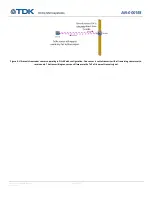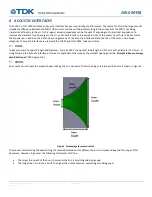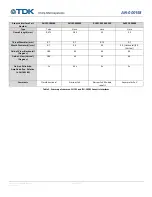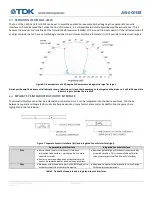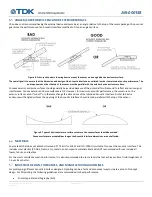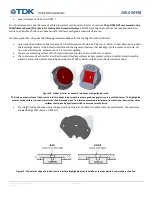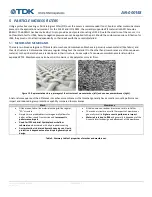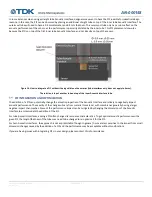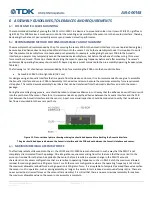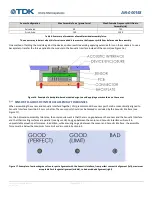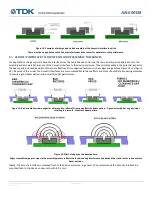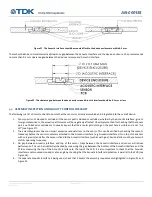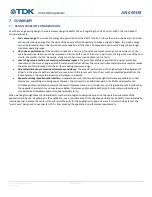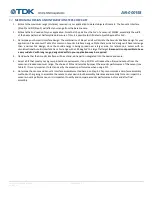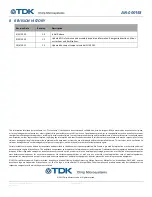
AN-000158
Document Number: AN-000158
Page 21 of 22
Revision: 1.2
MECHANICAL DESIGN AND INTEGRATION STEPS CHECKLIST
1.
Estimate the maximum range (distance) required in your application to detect objects of interest. The Acoustic Interface
(Step 2) and PIF (Step 5) will affect your range from the baseline case.
2.
Estimate the FoV needed for your application. Note that Chirp defines the FoV of a sensor at FWHM, essentially the width
of the beam pattern at half amplitude. Because of this, it is possible to still detect objects beyond this FoV.
3.
Determine your Acoustic Interface design. The combination of Steps 1 and 2 will dictate the Acoustic Interface design for your
application. Please consult Table 2 for common Acoustic Interface designs. Note that a wide FoV design will have less range
than a narrow FoV design, since the sound energy is being spread over a larger area. For reference, a sensor with an
omnidirectional Acoustic Interface has a 1m range with a 180 deg FoV to a large flat target.
Because it is not possible to have
a very wide FoV with long range, design tradeoffs in your application may be required.
4.
Decide whether the Acoustic Interface will be a stand-alone part or integrated into the device enclosure.
5.
Select a PIF that meets your ingress protection requirements, if any. All PIFs will reduce the ultrasound output from the
sensor and reduce maximum range. The choice of PIF can dramatically impact the acoustic performance of the sensor (see
Table 5). It is very important to test and verify the acoustic performance when using a PIF.
6.
Determine the sensor and Acoustic Interface assembly method based on Step 4. Chirp recommends a zero-force assembly
method such as gluing to assemble the sensor to your device. Both assembly tolerance and assembly force can impact the
sensor acoustic performance, so it is important to verify and compare acoustic performance before and after final
assembly.

